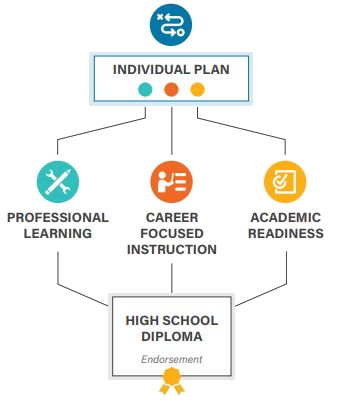 INDIVIDUAL PLAN
INDIVIDUAL PLAN
Each student completing an endorsement must have an individualized plan, which includes college planning linked to early understanding of career goals, financial aid, resume, and personal statement.
PROFESSIONAL LEARNING
Awareness, exploration, and preparation activities that provide opportunities for students to interact with adults in their workplace.
CAREER-FOCUSED INSTRUCTIONAL SEQUENCE
Two years of secondary coursework, or equivalent competencies, that articulate to a postsecondary credential with labor market value. Must include at least 6 hours of early college credit.
ACADEMIC READINESS
Ready for non-remedial coursework in reading and math by high school graduation through criteria defined by district and local community college.
College and Career Pathway Endorsement Framework
